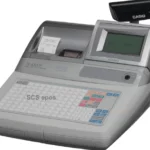Definition, Trends, and Tips for Success in Last-Mile Delivery.
One of the primary aspects that differentiate one online seller from another in today’s day is the kind of delivery mechanism they follow. Consumers no longer only care about the prices of products, the emphasis is rather on the speed of delivery.
A consumer’s purchase decisions are increasingly depending on the kind of delivery offered and everybody wants faster and cheaper delivery.

In order to fulfill this requirement, on the other hand, even the sellers need to stretch that extra bit and figure out ways to cut down supply costs, while also increasing the overall delivery efficiency.
If you are into online selling already or in your pursuit to become an online seller, you would know what it all comes down to: the last-mile delivery process. Last-mile delivery has emerged as a challenge to the online retailers and it would only intensify so in the coming years.
But having said that, if the challenges have intensified, so has the technology. And hence, the challenges around last-mile delivery can sure be tackled with the help of technology.
Let us dig deeper into this, shall we?
Last-Mile Delivery: What does last-mile delivery mean and what are the steps involved?
Last-Mile delivery is defined as the final leg of the entire delivery process; it is the point where a package is ultimately received by the intended customer at their residence.
This step involves a lot of human intervention since it will be a human being, as a delivery-person, who will be actualizing the process. And hence, this step can be a little tricky if it is not optimized by the last-mile delivery carrier.
The key steps involved in the entire flow process of last-mile delivery are.
- The sender’s requested orders are digitally recorded into the carrier’s system.
- The said order arrives at the transportation hub.
- The order is assigned to the delivery personnel with the relevant information (like a recommended route and recipient’s locations).
- Orders are scanned for the purposes of record-keeping and then loaded on the delivery trucks.
- The order is then delivered to the intended recipient.
- The delivery personnel then records and updates the delivery status.
To gain more insights on optimizing your last mile operations click on the guide below:
https://www.getfareye.com/insights/blog/last-mile-delivery-guide.
That sounds pretty doable, so where does the last-mile problem lie?
The irony with last-mile delivery is that it sure is the process that determines the satisfaction of the end consumer, but it could also prove to be a rather expensive process for sellers to undertake.
No seller would want to leave their customers unsatisfied, and so, they even undertake the extra costs to ensure efficient last-mile delivery. However, in the process, most sellers forget to optimize the process, eventually incurring all the extra costs on their own. That is the last-mile problem in brief.
Optimization: The ultimate solution to the increasing last-mile delivery costs
Breaking down each element of cost that goes behind the process of last-mile delivery might not be very helpful because there still will be a lot of gray areas. However, as a reverse mechanism, if you instead optimize the already incurring costs, you can realize significant savings month on month.
This amount that you save each month because of optimizing the last-mile delivery process, including enhancing last mile carrier tracking strategies, will then help you understand all the extra money you have been spending on the process.
Last-Mile Delivery Trends in 2020 and Beyond
Last-Mile delivery, like all other processes, has evolved over time to get to how rapid it is in 2020, but then again, evolution is a continuous process.
Here are some trends that organizations have chalked to make the best of their delivery processes and to actualize the ultimate goal of customer satisfaction. These trends (along with others that evolve) will play a definite role in the last-mile delivery processes of the future too.
Quick Order Fulfillment
We live in a world of instant gratification. If you want to speak to your friend even countries apart, it can be achieved at the tips of your finger. Hence, consumer behavior, as a whole, has become rather impatient and everybody wants to have their orders delivered as soon as possible; in some cases within a day, if not on the same day.
In order to stay ahead of the curve, even the last-mile carriers need to fulfill this expectation. This entire turn-around process of fulfillment becomes very easy and rapid with the implementation of technology.
Enabling Order Traceability
Most last-mile carriers are increasingly understanding the importance of enabling traceability and tracking of the shipped order. Tracking and traceability have become essential elements that assure a package is properly counted for. This is rather important because it avoids potential confusion around a lost package.
Live-tracking through GPS further adds to the feasibility of monitoring the real-time location of a package and a fleet driver; all of it contributing to increased awareness on the carrier as well as the user end.
Other similar additional features like proof of delivery and tracking information helps reduce the potential disputes that can otherwise take place between a consumer and a shipper.
Self-Sustaining Delivery Ecosystem
A lot of medium and big players in the e-commerce industry have now shifted to an in-house delivery system. The biggest, obvious example here being Amazon. With an in-house delivery system, the retailer doesn’t have to depend on a third-party carrier to be able to effectively ship the product packages; they do it on their own.
With in-house/self-sustaining delivery systems, the company essentially builds its own fleet and hires drivers on their own payroll. This primarily reduces dependencies and cuts down a lot of costs for the companies.
The in-house delivery system also, obviously, is reliant on the use of technology which might come across as a big first-time cost; but it is worth the money saved due to it in the long run.
Micro Warehousing: Renting of Additional Warehouse Spaces
Renting additional spaces and converting them into your company’s warehouse can further help the fulfillment of one’s delivery orders. This is simply because, with more volume of orders, one obviously will need more space to be able to fulfill the increased orders.
With more establishments dedicated to fulfilling orders, one can also segregate them on the basis of the kind of delivery they’d be used for. For example, one-day, same-day (in case of companies that sell perishable items like livestock), and no-rush delivery warehouses.
Deliveries Through Robots and Drones
When we spoke about the evolution of technology being a continuous process, this is what we were referring to. Robots are not quite in use yet but drones and test-launches of drones sure already are. It will not take too long for robot tests to be launched soon either.
As we have already established, human intervention is one of the biggest facets that cause delays in last-mile deliveries and makes the process much tricker. You cannot control issues like unavailability of delivery personnel or their inability to work a particular shift but that elements should be quite controllable with robots and drones.
Besides, human involvement also means a lot of labor costs in the form of salaries. With the advent of robots and drones, that aspect will be easier to handle too.
FAQs- What is Last-Mile Delivery: Trends and Tips for Success in 2020
How to improve last-mile delivery?
Here are some of the ways to improve last-mile delivery services.
- Planning ahead.
- Optimized routing and mapping of the fleets.
- Flexibility with delivery options.
- Automation of the dispatch process.
- Consistent communication with the consumers.
- Verified, electronic proof of deliveries.
- Live tracking and Updates.
Does Amazon use drones for last-mile delivery?
Amazon Prime Air is a drone delivery service that is under development for future-use to fulfill package deliveries through the air. The Amazon only recently was granted permission and once implemented, they will be able to deliver products in less than 30 minutes. Amazon drones are reported to have the flying ability for a distance of 15 miles.
What companies are reliable last-mile delivery players in India?
Far Eye is a multinational SaaS platform trusted by over 150 enterprises and could be a great partner for ensuring efficient last-mile deliveries.
Far Eye helps gain efficiency with last-mile deliveries while keeping costs under check and offering professional, technical help with a range of operations from delivery scheduling to allocation to routing to real-time tracking and tracing.
FarEye’s last-mile delivery software helps them deliver the perfect last-mile experience to customers at optimal efficiency.
Join 25,000+ smart readers—don’t miss out!









